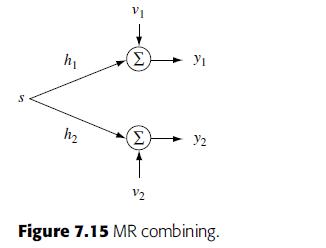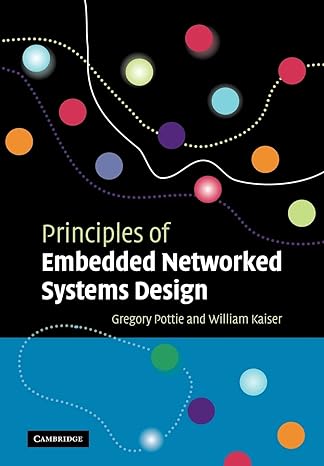MIMO equalization A discrete time two by two MIMO system is shown in Figure 7.14, where s1(n),
Question:
MIMO equalization A discrete time two by two MIMO system is shown in Figure 7.14, where s1(n), s2(n) are source sequences, and y1 and y2 are measurement sequences. The channel transfer functions are:
h11ðzÞ ¼ 1 þ az1; h22ðzÞ ¼ 1 þ bz1; h12ðzÞ ¼ cz1; h21ðzÞ ¼ dz1:
Besides the interference from the other source, the measurements are corrupted by the white Gaussian noise sequences
(n) with zero mean and variance 2v
.
(a) We define the vectors y ¼
y1ðnÞ
y2ðnÞ
y1ðn 1Þ
y2ðn 1Þ
2 664 3
775; s
¼
s1ðnÞ
s2ðnÞ
s1ðn 1Þ
s2ðn 1Þ
s1ðn 2Þ
s2ðn 2Þ
2 6666664 3
7777775
;
¼
1ðnÞ
2ðnÞ
1ðn 1Þ
2ðn 1Þ
2 664 3
775
:
Verify that y can be expressed in terms of s and as y ¼ Cs þ
:
(b) Assume the random sources s1 and s2 are stationary and white. Their mean and covariance are given by
E½sðnÞ ¼
0 0
; Rs ¼ E½sðnÞsHðnÞ ¼
2s 1 0 0 2s 2
:
Find the covariance matrix of y defined as Ry¼E[yyH].
(c) We estimate the source from measurements y based on the following scheme:
s ^
ðnÞ ¼
s ^
1ðnÞ
s ^
2ðnÞ
" #
¼ Wy in whichWis a 24 matrix. DetermineWin terms of C, Rs, and 2 such that the mean square error of estimation is minimized.
Step by Step Answer:

Principles Of Embedded Networked Systems Design
ISBN: 978-0521095235
1st Edition
Authors: Gregory J. Pottie ,William J. Kaiser





